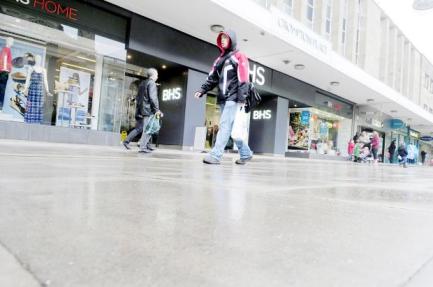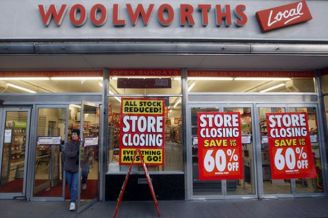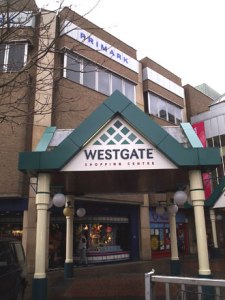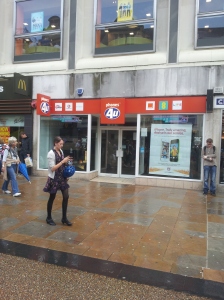 I greeted the news of the sale of BHS to Retail Acquisitions with the same feeling of incredulity I’d previously experienced over Gordon Brother’s purchase of the ailing Blockbuster chain in 2013.
I greeted the news of the sale of BHS to Retail Acquisitions with the same feeling of incredulity I’d previously experienced over Gordon Brother’s purchase of the ailing Blockbuster chain in 2013.
It seemed like a crazy buy, not least because if a canny businessman like Philip Green wants to shake hands on the sale of a major company for £1, you’d better count your fingers carefully afterwards.
The CVA details, released last month, revealed just how crazy it was. With a massive pension fund hole, debts of around £1.3bn and ongoing trading losses, it was going to take a miracle of biblical proportions to rescue the company for even the most experienced retail turnaround specialist. For someone like Dominic Chappell – a retail novice with several failed companies and a personal bankruptcy behind him – it was totally doolally.
The other thing that bothered me was the name of the company – Retail Acquisitions – which suggests that its primary aim was to acquire the stores, rather than to actually run them.
BHS was a dead store walking and I suspect Sir Green knew that when he sold it. Even the previously over-optimistic Gordon Brothers refused to sanction a £60m loan to Chappell for BHS, which if nothing else at least shows that they did their sums properly this time before leaping head first into another obviously doomed turnaround fiasco.
Dodging the Bullet
There are very few upsides to any of this, but I can’t help thinking how much worse things could have been had Philip Green also managed to buy M&S back in 2004. Already 4 years into his stewardship of BHS by then, one can only wonder if both these venerable old stores would have ended up in the mincer.
 M&S still has it’s problems, but it’s taken a far more robust route towards re-inventing itself than was ever evident at BHS. Updated, more up-market branding, a re-positioned clothing offer and a far more efficient front of house has kept Marks and Sparks out of the clutches of the receiver. Above all though it seems that dodging the bullet of being added to the Green portfolio was a far greater benefit to it’s survival.
M&S still has it’s problems, but it’s taken a far more robust route towards re-inventing itself than was ever evident at BHS. Updated, more up-market branding, a re-positioned clothing offer and a far more efficient front of house has kept Marks and Sparks out of the clutches of the receiver. Above all though it seems that dodging the bullet of being added to the Green portfolio was a far greater benefit to it’s survival.
The tired, confused and cluttered shop floor that greets you in BHS these days screams underinvestment and shredded staff morale. It’s been clear for years that Sir Phil had no idea what to do with BHS. In it’s final days under his stewardship, it was stuffed with poorly executed Arcadia brand concessions making it even less likely that shoppers would cross the threshold.
Essentially there was little inside that wasn’t already available elsewhere. This would also prove to be an Achilles heel for the new owners, leaving them very little room for manoeuvre in re-inventing the stock offer to attract new customers.
A late-to-the-party, rather shonky website did nothing to lift the image of a brand that was already years past it’s sell by date by the time it hit the net. The last gasp flirtation with a food offer shortly before selling the chain suggests the company had finally resorted to plagiarism of the more successful sectors of the M&S operation in a half-hearted attempt to turn the super-tanker before it hit the rocks.
Questions Need Answers
Given Sir Phil’s legendary retail acumen, it’s a conundrum as to why he wasn’t able to breathe new life into BHS rather than bail out. It’s almost like he wasn’t trying. Ultimately his priority was not to be on the apple cart when the wheels came off, which in business terms was a great move for him, but rather a bad one for his staff and creditors.
As shadow business secretary Angela Eagle has pointed out, there are still questions that need answers, especially if it’s it’s going to be left to the taxpayer to make up shortfalls in redundancies and pensions.
 I hope in the spirit of openness and transparency recently inspired by his friend David Cameron, Sir Phil will be just as forthright about his own personal financial arrangements. I’m sure speculation that, during the 15 years of his ownership, he trousered remuneration roughly equal to the hole in the pension fund is just a random quirk of inconsequential coincidence.
I hope in the spirit of openness and transparency recently inspired by his friend David Cameron, Sir Phil will be just as forthright about his own personal financial arrangements. I’m sure speculation that, during the 15 years of his ownership, he trousered remuneration roughly equal to the hole in the pension fund is just a random quirk of inconsequential coincidence.
Likewise, there’s also some concern about pay-outs to Retail Acquisitions that may not have been entirely appropriate in the circumstances. It’s now expected that the company will be called before MPs to explain some of its actions in the run up to the collapse.
Even if there was a plan to relaunch the brand after the buy out, it’s become apparent over recent weeks that this was secondary to re-financing the company. Something that should have been in place long before the new owners picked up the keys.
Speculation
Speculation will now be rife about the future for BHS. A pre-pack resurrection deal seems unlikely considering the complexity of the situation and the continuing dead weight of the pension fund. That would also seem to preclude the option of a buyer being found for the company as a going concern. Even so, according to the administrators, there have been numerous expressions of ‘serious interest’ from prospective buyers. But I suspect it’s the nature of that interest that will be the rub.
I’m sure speculation that, during the 15 years of his ownership, he trousered remuneration roughly equal to the hole in the pension fund is just a random quirk of inconsequential coincidence.
If it does shutter it’s doors, it’s likely that BHS sized hole in our high street will be more difficult to fill now than it was after the demise of Woolworths in 2008. Not just as physical space, but in terms economic and societal impact of so many job and creditor losses. The announcement a few days ago of the collapse of Austin Reed will make that even more acute.
 When Woolies went down there were plenty of takers from the bargain end of the retail spectrum eager to gain extra floor space. That sector is largely saturated now, although B&M Bargains are apparently eying some of the BHS portfolio.
When Woolies went down there were plenty of takers from the bargain end of the retail spectrum eager to gain extra floor space. That sector is largely saturated now, although B&M Bargains are apparently eying some of the BHS portfolio.
Dominic Chappell himself is also reported to be keen to extend his BHS pipedream by buying back the majority of the company from the administrators using yet more borrowed money, this time from the USA. This smacks to me now more of obsession than sound business sense and I can see no reason why we wouldn’t just see a re-run of the last 14 months.
Let’s hope then that reports of viable rescue plans prove to be more than the wishful thinking of the administrators, and that if any part of the company can be saved, the future owners have pockets deep enough to allow them to concentrate on the business of retail rather than of finance.



 My personal preference is for a system of local purchase tax, similar to what we see in many US stores. But I know I’m in a minority in favouring that. Indeed the very idea was discounted early on in discussions over reform last year.
My personal preference is for a system of local purchase tax, similar to what we see in many US stores. But I know I’m in a minority in favouring that. Indeed the very idea was discounted early on in discussions over reform last year.




 Economic reports seem to be like buses. You wait for ages and then four turn up at once. Last week they seemed to leave the depot together, all promising to take us somewhere nice for the summer.
Economic reports seem to be like buses. You wait for ages and then four turn up at once. Last week they seemed to leave the depot together, all promising to take us somewhere nice for the summer.

















